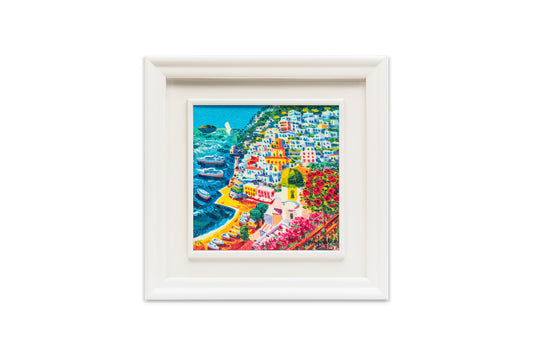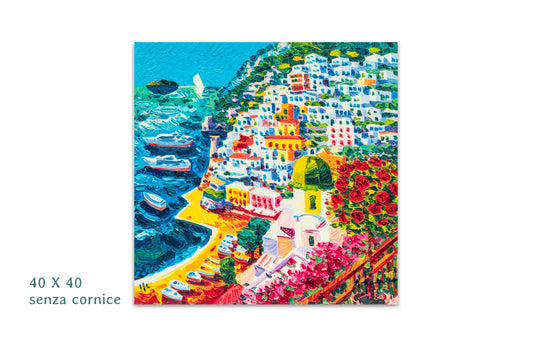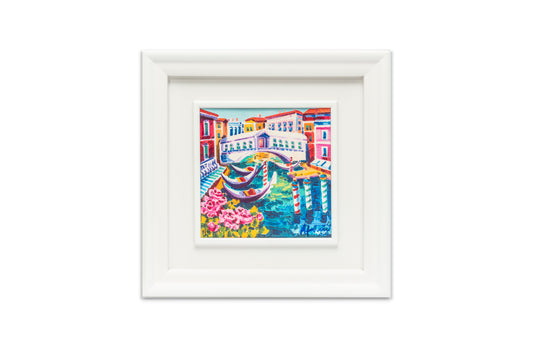For the creation of his serigraphies, Athos Faccincani uses the technique of artistic serigraphy, one of the oldest printing methods originating in China.
Using this system, artist appreciate the possibility of obtaining sharp, intense colours and refined overlays, thus creating a unique dialogue between light and colour, an essential element in Maestro Faccincani's works.
A peculiar characteristic of the silkscreen work is the process of overlapping the colours; a good print is created as the artist builds the image through the meticulous preparation of the foils, in an unique creative process.
Serigraphies are therefore a work of art in itselves, the technical realization of which is divided into three phases:
PREPARATION OF THE FOILS
(Colour Selection)
PREPARATION OF THE FRAMES
PRINTING PHASE
PREPARATION OF FOILS (Colour Selection)
The first phase concerns the most delicate work because it will determine the entire structure of the work. It is the phase in which the direct intervention of the artist is required and is called colour selection.The selection of colours consists of preparing transparent foils (in acetate) on each of which the artist intervenes with hand and brush, tracing all the areas in which the single chosen colour will then pass.
The artist, in defining each color on each individual film, will use a specific substance called silkscreen lipstick, which prevents the passage of ultraviolet rays. Once the first foil has been prepared, the silkscreen lipstick is waited for to dry. In the meantime, the frame gets prepared.

Athos Faccincani while preparing a foil
PREPARATION OF THE FRAMES
The silkscreen frame is nothing more than a normal metal or wooden frame, on which a fabric made of cross-weaved silk threads is stretched. One frame is used for each single foil.
Each frame is coated with a gelatin sensitive to ultraviolet light. Once the gelatin has dried, the next step is to transfer the image of the foil, prepared by the artist, onto the frame.
The frame will be placed in a special vacuum press . The foil will be placed in contact with the silk fabric of the frame which, thanks to the vacuum created by the press, will adhere perfectly to the gelatin. Then the two will be placed in a special oven and exposed ultraviolet rays. Since the silkscreen lipstick does not allow ultraviolet rays to pass through, the area underneath will remain protected and therefore water-soluble; the rest of the gelatin will become water-repellent.
Using a spray of water, the gelatin protected by the lipstick will dissolve, leaving free only those parts of the fabric where the colour will pass . This process is repeated for each colour that the artist decides to print.

Silkscreen IL CUORE MEDITA E LA' POSITANO 80 X 140 cm in printing house
PRINTING PHASE
The frame thus prepared is finally mounted on a special press, ensuring that the fabric of the frame is in direct contact with the surface of the press.
The support material of the serigraphy (canvas or cardboard) will be placed between the press plate and the fabric. The silkscreen colour will be spread on the upper part of the frame and, through the pressure of a rubber spatula, pulled by hand or mechanically, it will filter into the points where the fabric has been freed from the gelatin.
The colour filtered by the silk fabric will adhere to the support material which then will be ready for a subsequent colour passage. Each serigraphic work is composed of an average of forty colour passeges which makes it a very laborious and artistically unique artisanal process.

Maestro Faccincani while signing the serigraphic works
When the serigraphies are completed satisfactorily, after being approved by the artist, the copies are numbered and signed by the Maestro himself.
Athos Faccincani






